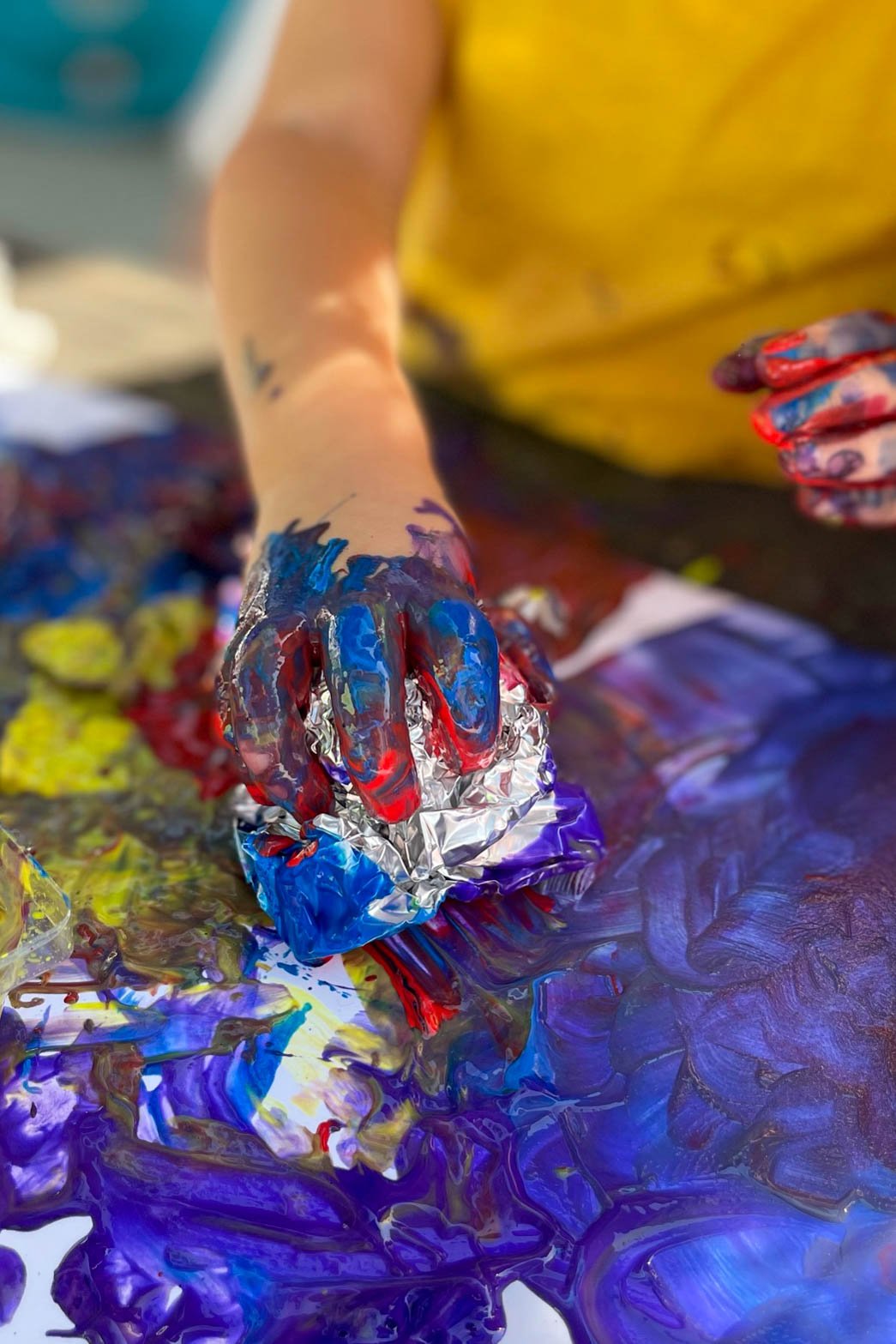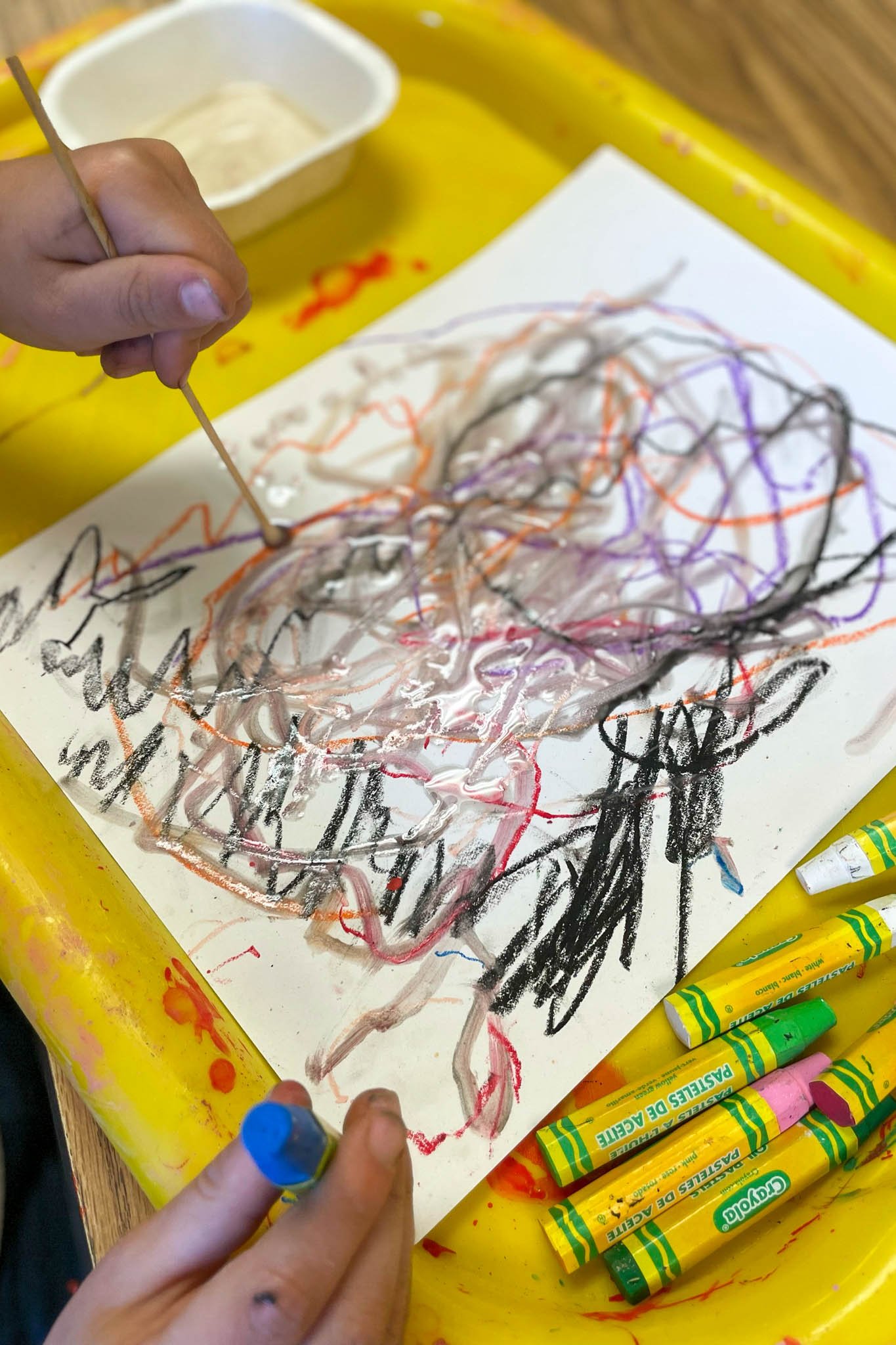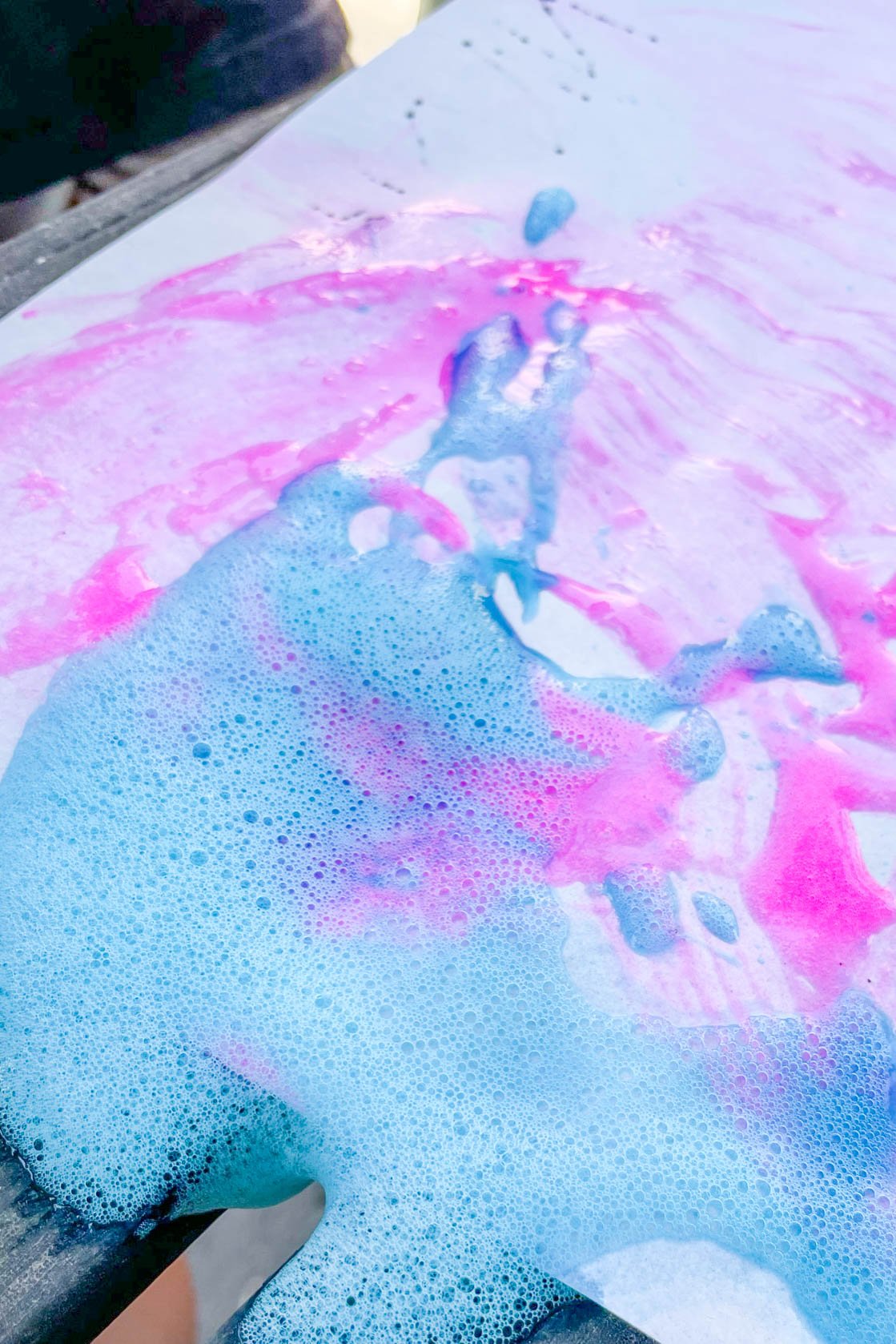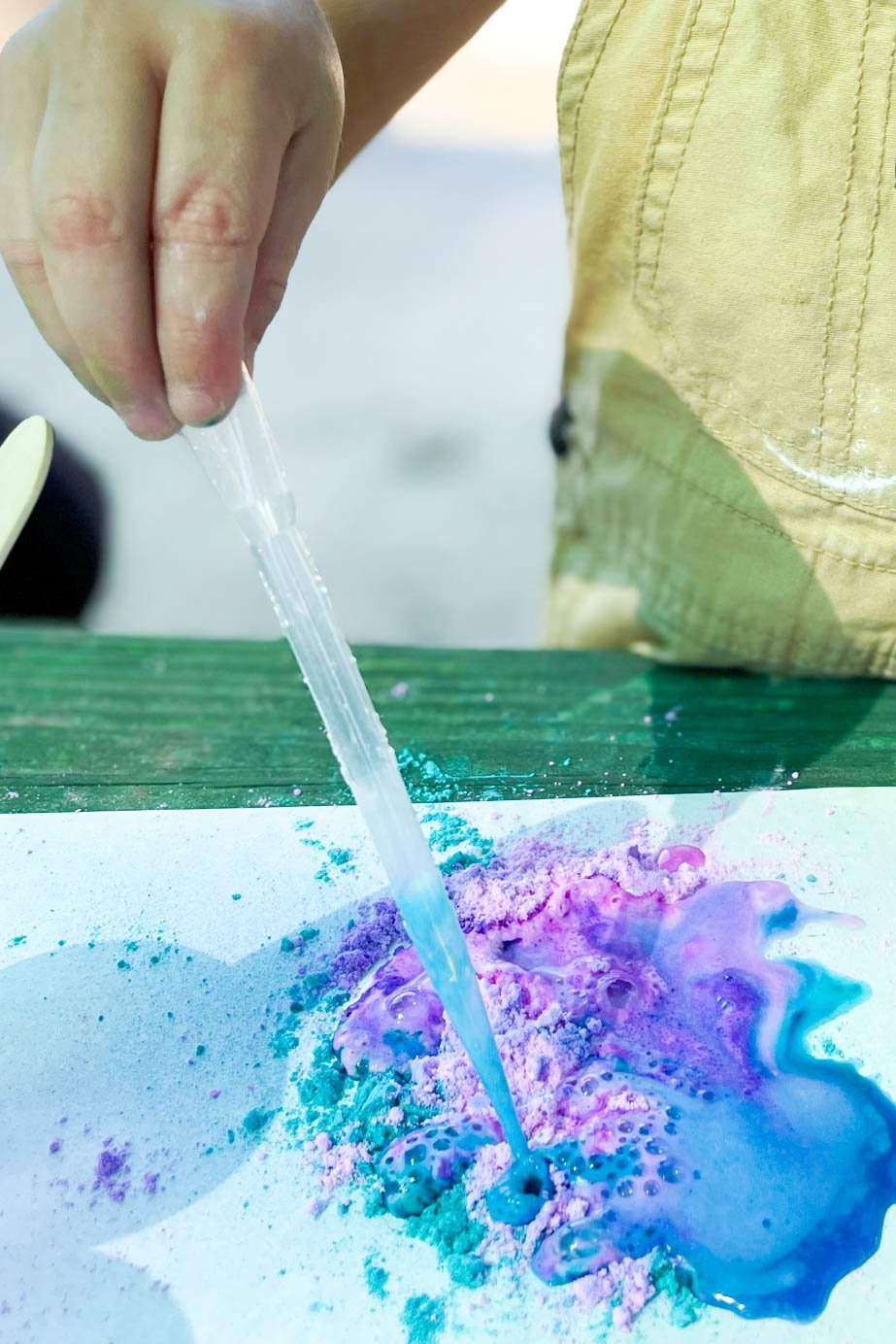The Benefits of Process Art
Art at the Co-op is all about the process and not the product (although the product can be quite beautiful), hence the term Process Art. Every day our littles can explore different art mediums and different tools – what does it feel like?, what does it smell like?, what does it sound like when I slap the brush onto the wet paper and where do the splatters go?, and in frequent cases, what does it taste like? Process art is a very sensory-rich experience. The littles are figuring out what each medium can do – acrylic vs. tempera paint vs. tempera powder vs. paint sticks, liquid watercolors vs. cake watercolors, wet chalk vs. dry chalk, clear glue vs. white glue vs. flour paste, markers vs. crayons vs. oil pastels vs. colored pencils…and so on. They are experimenting with construction paper, copy paper, newsprint paper, butcher paper, card stock, tissue paper. They explore glitter, shaving cream, and collage materials. They paint vertically, horizontally, and even upside down!
Through all this experimentation of mediums and material, our littles develop the following academic foundations:
They develop fine motor skills, gross motor skills, hand-eye coordination, language, cooperation, wonder, thinking, risk-taking, and problem solving skills.
They learn about counting, colors, shapes, dimensions, measuring, chemistry, physics, storytelling, inventing, self-expression, team work, project management, likes & dislikes, and exploration.
They learn to try, to daydream, to ask questions, to relax, to challenge themselves, to pause, to observe. They learn about people, about creativity, and about being themselves!
Creative, developmentally appropriate process art is crucial in the development of reading and writing. The art of young children develops in a pattern that is universal, starting with scribbles that later evolve into shapes and then figures, and finally figures and shapes together. At the same time, dots and dashes begin to emerge, first singly, and later in groups or lines. Eventually these dots and dashes include letters and are finally replaced entirely by letters for writing. The figures and dots that represent people and words to the little are one of the first glimpses that they can understand and use abstract representation. There are 80 identified stages of scribbling (Analyzing Children’s Art by Rhoda Kellog). All of these stages need to occur and be mastered before reading and writing can be understood. Littles cannot advance through those stages of scribbling without the time to freely explore material on their own terms and timeline. Along with creative and emotional expression, this is the end-product of process-focused art.
“Art is a place for children to learn to trust their ideas, themselves, and to explore what is possible”
MaryAnn F. Kohl
With the above quote in mind, let us address the difference between process-focused vs. product-focused art:
Characteristics of product-focused art:
Littles have instructions to follow
There is a right and a wrong way to proceed
The teacher or caregiver created a sample for littles to copy, gives numerous driections, and/or tells littles where to place things
There is a finished product in mind
The little’s finished product all looks the same
The children experience frustration or get bored quickly
The teacher or caregiver might fix “mistakes”
The whole class took part in an art project at the same time
Patters and examples of the project are readily available online
Characteristics of process-focused art:
There is no step-by-step instructions
There is no sample of littles to follow
There is no right or wrong way to explore and create
The art is focused on the experience and on exploration of techniques, tools, and materials
The art is unique and doesn’t look like anything to an adult
The experience is relaxing or calming
The art is entirely the little’s own and the experience relevant to the child
The art experience is a child’s choice
Which experience would you most enjoy? In which experience would you gain the most knowledge? Product-focused “art” is generally referred to as “crafts”. Crafts do have their place. They can help improve fine motor skills and listening skills. It can be a practice in following directions. Crafts focus more on a particular skill, technique, or end result. Crafts do not focus on creative expression; therefore crafts are not art. Littles cannot move through the 80 stages of scribbling if all they do are crafts. Here at the Co-op we offer process-focused art, we even have an annual art show to show off the products of those processes. All littles from our youngest infants to our oldest pre-k kids participate. Don’t get me wrong, we occasionally introduce a craft project. Fine motor development, listening skills, and working on following directions are all important and help with body/self control, but we understand that crafts are not art.
So, when your little comes home with paint on their clothing, glue in their hair, and who knows what under their fingernails, be secure in the knowledge that they have been allowed the opportunity to freely engage in their art, that it’s theirs and exactly what they created. Yes, we are messy! We know that learning about the world and the things in the world and how they work is messy, and at the end of the day, the knowledge they gain is worth it. Children: 100% washable, towel dry!





